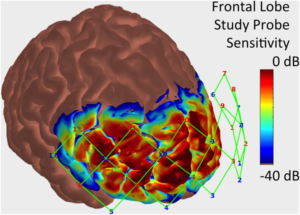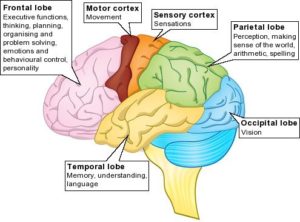Successful navigation of the social world requires the ability to recognize and track emotions as they unfold and change dynamically. Neuro-imaging and neurological studies of emotion recognition have primarily focused on the ability to identify the emotion shown in static photographs of facial expressions, showing correlations with the amygdala as well as temporal and frontal brain regions.
Our mood is a transient frame of mind that influences how we think and view the world. It is influenced by events in our lives, the amount of sleep we get, hormones, even the weather. But what role does the brain play in shaping our mood?
The limbic system
Many regions fundamental to mood are buried deep in the most primordial parts of the brain; that is, they are thought to have been among the first to develop in the human species. This is probably because mood is evolutionarily important.
Being glum can be advantageous and has been shown to sharpen our eye for detail, for instance. But, overall, the brain seems geared towards maintaining a mildly positive frame of mind. Being in a good mood makes us more likely to seek new experiences, be creative, plan ahead, procreate and adapt to changing conditions.
Our mood is a transient frame of mind that influences how we think and view the world. It is influenced by events in our lives, the amount of sleep we get, hormones, even the weather. But what role does the brain play in shaping our mood?
The limbic system
Many regions fundamental to mood are buried deep in the most primordial parts of the brain; that is, they are thought to have been among the first to develop in the human species. This is probably because mood is evolutionarily important.
Being glum can be advantageous and has been shown to sharpen our eye for detail, for instance. But, overall, the brain seems geared towards maintaining a mildly positive frame of mind. Being in a good mood makes us more likely to seek new experiences, be creative, plan ahead, procreate and adapt to changing conditions.
The limbic system is the major primordial brain network underpinning mood. It’s a network of regions that work together to process and make sense of the world.
Neurotransmitters, such as serotonin and dopamine, are used as chemical messengers to send signals across the network. Brain regions receive these signals, which results in us recognising objects and situations, assigning them an emotional value to guide behaviour and making split-second risk/reward assessments.
The limbic system sits under the cerebrum (the largest and newest part of the brain) and is made up of structures such as the hypothalamus, hippocampus and the amygdala.
The almond-shaped amygdala attaches emotional significance to events and memories. It came to the attention of emotion researchers in 1939 when monkeys whose amygdalae were removed showed bizarre patterns of behaviour. They became fearless, hypersexual and either devoid of emotion or irrationally aggressive.
Dubbed Kluver-Bucy Syndrome, it is rare in humans, but has been observed in people with amygdala damage incurred, for instance, after a bout of brain inflammation.
The hippocampus, meanwhile, reminds us which courses of action are congruent with our mood. For instance, if you feel great you might like to walk down a path fringed with daffodils. If you feel crap, you may instead be drawn to that bar that spins melancholy albums by The Smiths.
The hippocampus has been shown to be shrunken in people with chronic depression. This may account for common features of the condition, such as vague or non-specific recall of personal memories.
The limbic system also regulates biological functions in line with our mood, such as accelerated heart rate and sweating triggered by feeling flustered. Being so old, however, the limbic system is rather primitive. In day-to-day life it’s controlled by some newer networks that co-ordinate how we think and act, so our behaviour is conducive to achieving longer-term goals, rather than always going wherever the mood takes us.



